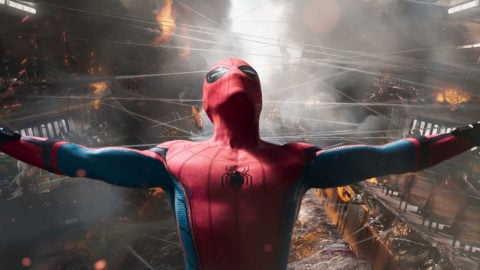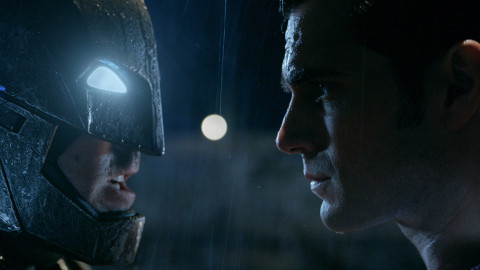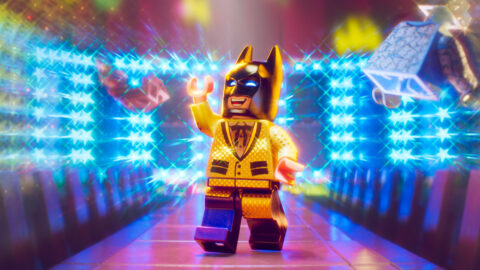Deep Focus: Spider-Man: Into the Spider-Verse
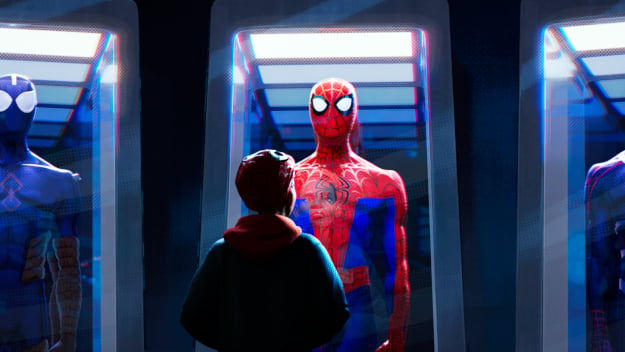
Spider-Man: Into the Spider-Verse puts super-friend animation into dazzling modernist form while it spins a narrative of bardic proportions. To be or not to be Spider-Man—that is the alternately hilarious and harrowing question facing 13-year-old Miles Morales (Shameik Moore), a talented Brooklyn street artist. Miles has revered Spidey all his young life, so “to be” is the right answer. But Miles gets bitten by a radioactive spider and assumes arachnid powers just when he’s entering an elite school and worrying about meeting his parents’ expectations. His doting father, Jefferson Davis (Brian Tyree Henry), is a New York City cop who hates the masked super-vigilante. What’s worse, shortly after he comes into his super-abilities, he experiences trauma and dizzying revelations that would generate PTSD in most people. What’s a budding wall-crawler to do?
This beautifully frenetic variation on comic-book writer Brian Michael Bendis’s original Morales saga retains its verve and casual inclusiveness. “Jefferson Davis” is a black man, Miles has taken the last name of his Puerto Rican mother, Rio Morales (Luna Lauren Velez), and Miles’s beloved Uncle Aaron (Mahershala Ali), is a shady operator on Gotham’s mean streets who encourages the boy to keep creating African-American graffiti, in or out of legal spaces. In a bit as funny as the “styling-gel” gag in There’s Something About Mary, Miles can’t control the sticky stuff that suddenly shoots from his fingers: it clings to the hair of a fellow student who says her name is “G-wanda” and that she’s from South Africa, though she turns out to be Gwen Stacy (Hailee Steinfeld)—Spider-Gwen—who swings through the air with rare terpsichorean grace and comes from another time-space realm entirely. The film takes an apocalyptic pivot when the arch-villain Kingpin (Liev Schreiber), hoping to reunite with his dead wife and son, uses his very own super-collider to smash into other dimensions, wreaking havoc throughout the five boroughs. The “real” Spider-Man, Peter Parker (Chris Pine), slings his last web in his effort to take down the machine—and makes a dying wish that Miles take up the Spider-Man’s burden and protect the universe as they know it.
Spider-Man: Into the Spider-Verse tells how Miles fights his way toward doing just that, with the help of an uproariously arbitrary but somehow cohesive team of Spider-beings who plunge into his world through Kingpin-created wormholes. The first to be revealed is an alternate, 40-year-old Peter Parker/Spider-Man (Jake Johnson), who’s as quick with a clever riff as Deadpool. Physically he’s seen better days—he wears sweatpants while eating his way through a midlife crisis—but his outright failings and self-doubts make him the perfect funky mentor for Miles. His irreverent, wryly substantial patter contains nuggets of good advice: he teaches Miles that to be the best Spider-Man possible requires a “leap of faith.” Phil Lord and Rodney Rothman’s script, from a story by Lord, works his wisdom into the action organically and potently, and the directors (Bob Persichetti, Peter Ramsey, and Rothman) illustrate it vividly. There’s an eerie existential magic to the way they freeze Miles’s slight figure in mid-air.
It’s hopeful to envision a Spider-Verse filled with Spider-beings who reflect each other like funhouse mirrors, not because it makes us believe we can wear the mask (the message being pushed in the promotions), but because, like vintage escapism, it turns movie theaters into meccas for people who believe in expanding existential possibilities. Nicolas Cage provides the bleak yet engaging voice for hard-boiled Peter Parker/Spider-Man Noir, a monochromatic figure from a black-and-white movie era (the 1930s), who’s accustomed to fighting Fascists and Nazis. He tends to get glummer and more ominous when confronting moral ambiguities. Kimiko Glenn lends catalytic pep to anime-style heroine Peni Parker, a Japanese-American New Yorker who shares a telepathic bond with a radioactive spider in control of a super-spider-suit or robot: //SP//dr. The wildest of all wild cards is Peter Porker/Spider-Ham, a talking critter straight out of Burbank, who can draw his own escape hatch and leap into it with the freewheeling gusto of vintage Warner Bros. 2-D animation. He also packs a mean cartoon mallet.
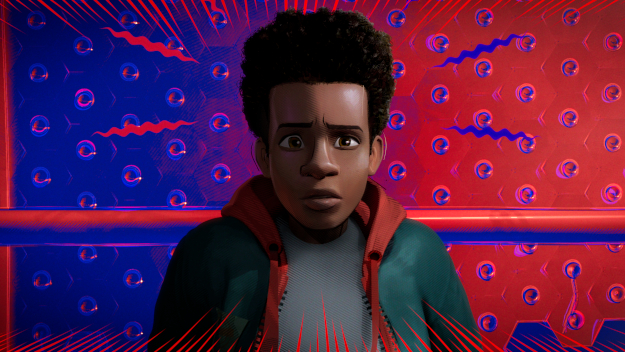
Spider-Man has usually been an engaging and affecting outsider, not a joiner. In a wonderful turnaround, this team of Spider-misfits conveys more fraternal and sororal spirit than any recent Robin Hood or King Arthur film, or male- or female-driven Ocean’s movie. It’s surprisingly poignant to hear these loners share the secret that each of them has failed to save a loved one. It’s effervescent fun to eavesdrop on them recounting their early spider days: growing up absurd with insectile abilities.
Lord and his creative partner Christopher Miller (two of five credited producers) have told interviewers they’ve made a “postmodern” Spider-Man. But there’s nothing pretentious about this movie. They simply present it as a given that Miles and his peers would be familiar with Spider-Man comic books. The parallels they draw among diverse Spider-things get funnier as the film goes along. It’s a seriocomic thrill to see the key pages of Peter Parker’s origin story flip by with subtle or bold contrasts as various heroes give it voice. The whole movie salutes the many singular traits that can be contained in one shared identity. Miles possesses his own unique capabilities, such as hurling “venom strikes” (they register like electronic jolts) and turning invisible—what Peter Parker/Spider Man calls “a flight or fight thing” that Miles must learn to control. The theme of this film’s final act resembles that of the greatest gladiator movie: “I am Spider-Man!” meets “I am Spartacus!” It’s about the glorious intersection of individual and group ideals.
The way the Spider gang swings together, especially under the influence of Lily Tomlin’s scrappy re-imagined Aunt May, is the opposite of Kingpin’s group dynamic with his gaudy supervillains. Kingpin’s massive black-clad frame and squashed bowling-ball head erase all the color and detail and any competitors from the screen. His henchmen—an imposing bunch, including aerial threats like the dragon-like Green Goblin and the slithery Doc Ock, and more earthbound foes like the poisonous, pincered Scorpion, the super-suited thug The Prowler and the affectless hit man Tombstone—operate like soloists without a conductor.
“Let’s go backwards when forward fails,” commands the key line in the Peter Allen song “Everything Old Is New Again.” That idea ignites this film’s eruptive animation. Its imagistic breakthroughs emerge from the artists’ fondness for Golden and Silver Age comics rendered in cheap four-color dot printing on pulp, not slick paper. The filmmakers forge wide-screen equivalents to the splashy, fractured layouts of the 1960s and 1970s, when DC and Marvel exploded the three-panel format and filmmakers like Norman Jewison and Brian De Palma toyed exultantly with split screen. This movie uses hypnotic spots and quivering lines, abrupt surges of color, and asymmetrical compositions in startling arrangements to make us feel as if we’re walking inside a 10-,12-, or 15-cent comic.
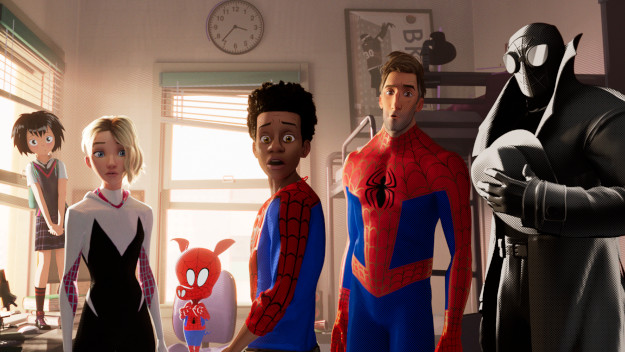
The effects, though, aren’t merely super-pictorial: the filmmakers deploy every visual device to intensify suspense, impart information, and open up the inner states of the lead characters. The movie uses graphic stress lines as well as written sound effects like CLUNK or BOOM not for camp, as in the Batman TV series, but for expressive force and nuance. (When Peter teaches Miles the “whip and release” of web-slinging, a delicate written “Whip” appears each time, with a gentle whoosh.) As for Spider-Ham, the animators hark back to the “rubber-hose” animation of Mickey Mouse and Oswald the Lucky Rabbit. Spider-Ham’s limbs become exuberant squiggles, devoid of articulated joints.
At times Spider-Man: Into the Spider-Verse evolves into clever and instinctive Cubism: pure pop Picasso. At other times it’s as mathematical and eerie as M.C. Escher, especially in the super-collider scenes, when fractal bits of “reality” pop in and out of ever-changing voids and chasms. We never doubt that the Spider-mates can sense how to maneuver themselves into the exact piece of Chaos they must save in order to preserve our dimension (and Miles’) or hurl themselves into their own. The filmmakers destroy geography, then substitute a mad, abstract yet coherent geometry. Navigating this space with Miles is disorienting and exhilarating. We inhale an audiovisual laughing gas.
The movie repeatedly pays homage to Marvel’s mastermind, Stan Lee, who co-created the original Spider-Man with Steve Ditko and contributes one of his most pungent cameos. In an interview for a short I produced for the Criterion Channel over a year ago, Daniel Raim’s “Marvel Mon Amour,” Lee lamented that his close friend, the pioneering French director Alain Resnais, never made the comic-book movie of his dreams: a Spider-Man film. “If he had done Spider-Man,” Lee said in 2017, “it would not have been like a normal superhero story.” Neither is Spider-Man: Into the Spider-Verse. If Lee, who died in November, had had the chance to see this Spider-Man completed, he would have been ecstatic.
Michael Sragow is a contributing editor to Film Comment and writes its Deep Focus column. He is a member of the National Society of Film Critics and the Los Angeles Film Critics Association.



